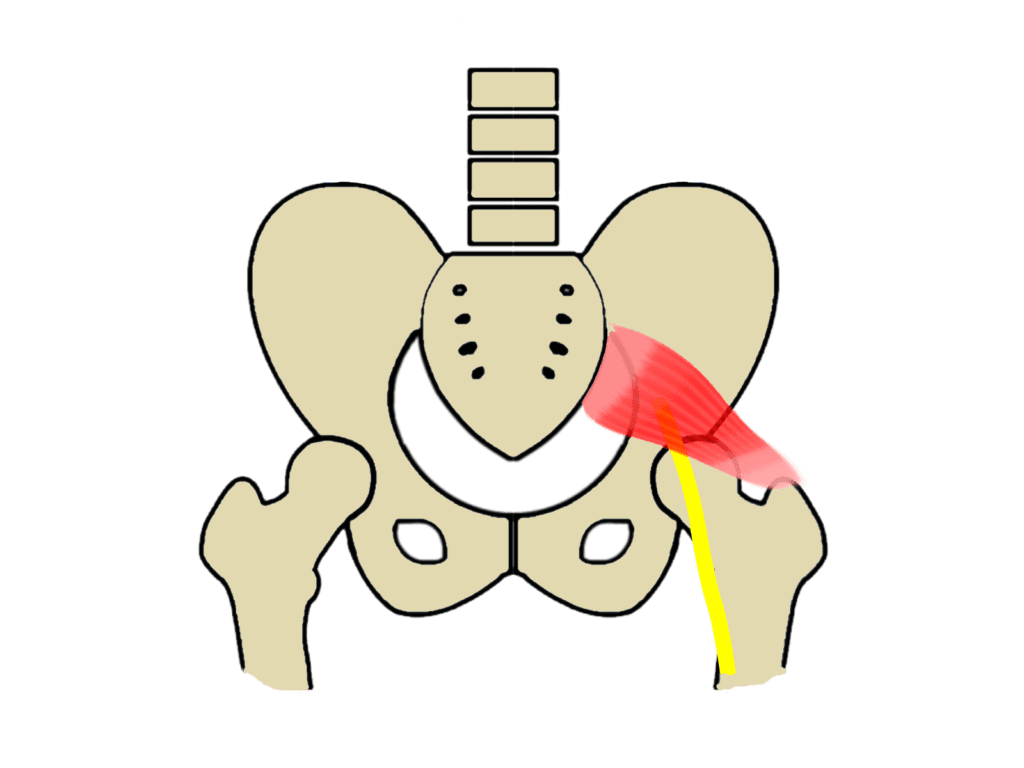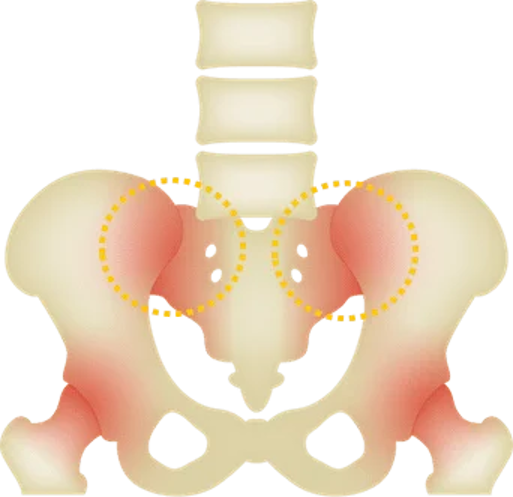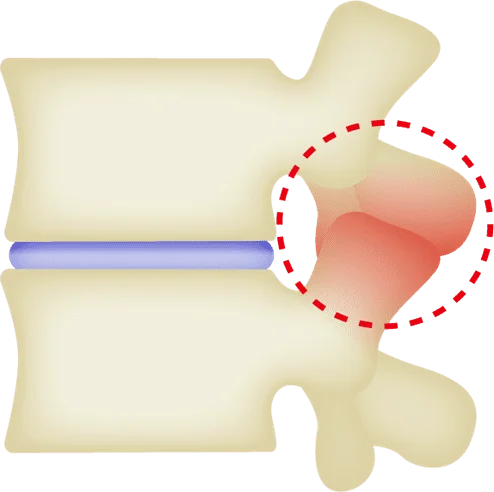Column What is sciatica? Characteristics and Different Treatment of Sciatica Accompanied by Pain and Numbness
July, 28, 2023
Sciatic Nerve Pain or sciatica is a symptom of compression or stimulation of the thickest nerve in the human body, which extends from the lower back all the way to the legs.
Many conditions can cause sciatica, among which lumbar disc herniation and lumbar spinal stenosis. The most common of these are spinal canal stenosis and herniated discs.

Characteristics of sciatica
Sciatica is characterized by sharp pain similar to an electric shock and numbness in the buttocks, thighs, calves, and toes.
Tension in the calves, heavy legs, a pins and needles (paresthesia) or burning sensation are also characteristic of sciatica.
Disorders often mistaken for sciatica
Diseases that cause symptoms similar to sciatica include pisiform muscle syndrome, sacroiliac joint disorders, intervertebral arthritis, and psoas nerve disorders (or cluneal nerve neuropathy).
Piriformis syndrome
Piriformis syndrome occurs when the piriformis muscle located in the buttocks causes an irritation of the sciatic nerve.
The piriformis muscle is a muscle that emerges from the back of the buttock and connects to the femur. Because the sciatic nerve passes through the tunnel created by the piriformis muscle, symptoms occur when this particular muscle becomes tight.
The symptoms are characterized by pain and numbness from the buttocks down to the lower extremities and are exacerbated when the knees are turned inward while in a sitting position.

Sacroiliac joint disorder
This misalignment or distortion of the sacroiliac joint, the joint between the sacrum and pelvis, causes lower back pain, buttock pain, and lower leg pain. This is called sacroiliac joint disorder.
The main symptoms are similar to those of sciatica, but in sacroiliac joint disorders, the pain may be along the sacroiliac joint surface or on the outside of the lower extremity.

Facet joint disease
The facet joints are a pair of right and left joints that connect the vertebrae to each other. Intervertebral arthropathy is a disease in which this intervertebral joints degenerates and become inflamed.
The main symptoms are lower back pain and buttock pain, which is more pronounced when the patients shift their position of the hips or moves their bodies. Numbness and leg pain tend to occur much less frequently.

Cluneal nerve neuropathy
The pudendal nerve is the nerve that connects the spine to the upper surface of the hips. Cluneal nerve neuropathy is a condition in which the hallux valgus nerve is pinched and tightened by bones and muscles as it travels over the pelvis, resulting in lower back pain, leg pain, and numbness. In recent years, it has also been referred to as the “new type of low back pain.
In the case of Cluneal nerve neuropathy, the area may be painful when pressing on the lower back or when lying on one’s back. The pain may be relieved by holding one’s lower back when walking.
As mentioned above, there are a variety of conditions that can cause symptoms similar to sciatica, but an accurate diagnosis is necessary to receive proper treatment.
If you experience symptoms similar to sciatica, be sure to visit your healthcare provider for an examination.

What are the different treatments for sciatica?
There are two main types of treatment for sciatica: conservative therapy and surgical therapy.
Conservative therapy
・Physical therapy
Physical therapy is a therapy to alleviate symptoms such as pain by improving blood circulation mainly through heat therapy, massage, and traction exercises.
・Exercise therapy
This kind of treatment is used to relieve muscle tension, improve blood circulation, and alleviate pain through physical exercises and stretching. It is often used for rehabilitation after surgery.
・Drug therapy
This method relieves symptoms through the use of pain medication.
・Nerve block therapy
This method temporarily blocks pain transmitters by injecting directly into the nerves or around the nerves to relieve severe pain. It also relieves tension in the autonomic nervous system, which improves blood circulation and relieves symptoms.
Surgical Therapy
Surgery is rarely the first step in the treatment of sciatica but may be considered if other treatments have not been very effective or if bladder or rectal disorders have been observed.
Since the main disorders associated with sciatica are disc herniation and spinal canal stenosis, the main surgical procedures available are the ones indicated for disc herniation and spinal canal stenosis.
・Endoscopic lumbar discectomy (MED method)
This is the most standard surgery for herniated discs. A 16mm incision is made in the back under general anesthesia, an external canal and endoscope are inserted, and the endoscope is used to confirm the protruding herniated portion and remove it.
・Percutaneous endoscopic lumbar discectomy (PELD method)
An operation tube is inserted from the back under local anesthesia, and the herniated area is removed while using an endoscope to check the exact location in real time.
・Endoscopic lumbar discectomy
Under general anesthesia, an 18-20 mm skin incision is made on the back, an endoscopic tube is passed through it, and part of the vertebral arch and excess ligamentum flavum are removed to relieve pressure on the nerves and widen the spinal canal.
・Endoscopic lumbar intervertebral fusion
An endoscope and X-ray fluoroscopy are used to fuse the intervertebral bodies.
Under general anesthesia, the skin of the back is incised, the degenerated intervertebral disc is removed, and an artificial device called a cage filled with bone taken from the lumbar bone is inserted to reshape the spine. The vertebrae are then fixed with screws and rods.
Treatment at our clinics – The Cellgel Method
Our clinic offers the Cellgel method for herniated discs and spinal canal stenosis with sciatica. It is one of the most advanced treatment methods that have been thoroughly researched and developed in recent years and is a new treatment method with solid evidence to back it up.
Herniated discs and spinal canal stenosis are the result of a disc cracking and its central component protruding, causing a narrowing of the spinal canal. If the disc crack is not repaired, it can herniate again or cause a recurrence in the narrowing of the spinal canal.
The Cellgel procedure is a curative treatment because it can “repair the discs”, which is not possible with other treatment methods. It is characterized by the fact that the volume of the disc is not reduced, and the drug remains in the disc as a gel-like implant after treatment, thus preserving the disc.
At our clinic, we track down the cause of symptoms not only by MRI examination but also by checking the patient’s symptoms and daily life.
Based on the results of the examination, we will propose a treatment method that suits each patient individually and explain prevention and improvement after treatment in a way that is reassuring and satisfactory to the patient.
If you are suffering from sciatic nerve pain, please consider having a consultation at our clinic.
Related Articles
Causes and Symptoms of Sciatic Nerve Pain, Treatment Methods, and Lifestyle Habits to Be Wary of



